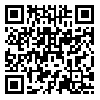Volume 1, Issue 3 (8-2003)
etiadpajohi 2003, 1(3): 133-148 |
Back to browse issues page
Download citation:
BibTeX | RIS | EndNote | Medlars | ProCite | Reference Manager | RefWorks
Send citation to:



BibTeX | RIS | EndNote | Medlars | ProCite | Reference Manager | RefWorks
Send citation to:
Haj Hosseini M. Comparing the Attributional Theory (Learned Helplessness Model) Among Addicted and Non-Addict Youths of the City of Yazd. etiadpajohi 2003; 1 (3) :133-148
URL: http://etiadpajohi.ir/article-1-484-en.html
URL: http://etiadpajohi.ir/article-1-484-en.html
Abstract: (13525 Views)
The aim of this research is to look into the impacts of Attributional theory over the rate of youths’ tendency towards addiction. In order to reach this goal, it has been assumed that learned helplessness is far more among addicted youths compared to non-addict youths. On the basis of the six dimensions of Attributional theory six subsidiary assumptions were formulated. The statistical grouping under study included all the youths from the age of 18 to 28 residing in Yazd (within the framework of two addicted and non-addict groups). The census method was used for selecting the addicted sample and the random method was applied for selecting the non-addict sample. Eventually 97 addicts and 10 non-addicts were selected. The Attributional theory questionnaire was used for collecting data. It was later analyzed using the statistical T test. It was finally indicated that addicted youths are more suffering from learned helplessness compared to non-addict youths.
Type of Study: Research |
Subject:
General
Received: 2014/06/15 | Accepted: 2014/06/15 | Published: 2014/06/15
Received: 2014/06/15 | Accepted: 2014/06/15 | Published: 2014/06/15
| Rights and permissions | |
 |
This work is licensed under a Creative Commons Attribution-NonCommercial 4.0 International License. |





